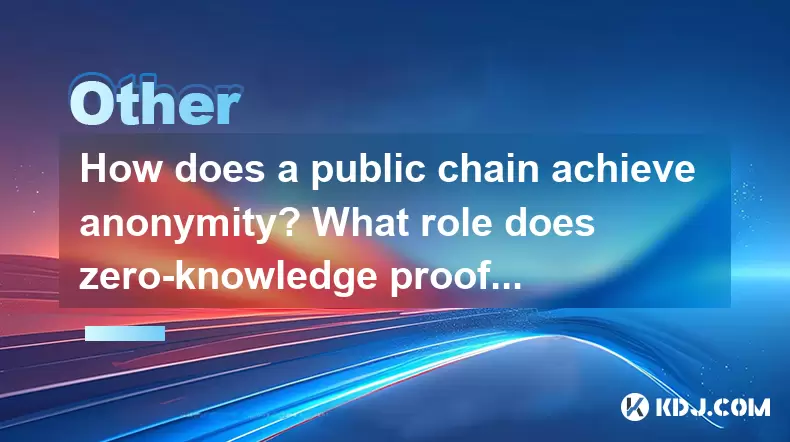-
 Bitcoin
Bitcoin $115200
-2.68% -
 Ethereum
Ethereum $3601
-5.16% -
 XRP
XRP $3.035
-2.96% -
 Tether USDt
Tether USDt $0.9997
-0.04% -
 BNB
BNB $764.5
-5.43% -
 Solana
Solana $168.1
-5.92% -
 USDC
USDC $0.9998
-0.02% -
 Dogecoin
Dogecoin $0.2090
-4.80% -
 TRON
TRON $0.3272
-0.49% -
 Cardano
Cardano $0.7306
-5.00% -
 Hyperliquid
Hyperliquid $39.16
-12.22% -
 Stellar
Stellar $0.3967
-4.96% -
 Sui
Sui $3.566
-5.95% -
 Chainlink
Chainlink $16.55
-6.57% -
 Bitcoin Cash
Bitcoin Cash $552.3
-3.90% -
 Hedera
Hedera $0.2516
-4.69% -
 Avalanche
Avalanche $21.99
-5.75% -
 Toncoin
Toncoin $3.621
-0.28% -
 Ethena USDe
Ethena USDe $1.000
-0.03% -
 UNUS SED LEO
UNUS SED LEO $8.951
0.02% -
 Litecoin
Litecoin $105.9
-3.59% -
 Shiba Inu
Shiba Inu $0.00001232
-5.00% -
 Polkadot
Polkadot $3.640
-5.55% -
 Uniswap
Uniswap $9.048
-7.03% -
 Monero
Monero $301.8
-1.51% -
 Dai
Dai $0.9999
-0.01% -
 Bitget Token
Bitget Token $4.334
-3.66% -
 Pepe
Pepe $0.00001064
-6.17% -
 Cronos
Cronos $0.1367
-5.78% -
 Aave
Aave $259.2
-4.59%
How does a public chain achieve anonymity? What role does zero-knowledge proof play
Zero-knowledge proof enhances anonymity on public chains by validating transactions without exposing sensitive details, ensuring user privacy and security.
May 16, 2025 at 11:36 am

Introduction to Anonymity in Public Chains
Public blockchains, by their very nature, are transparent and open ledgers where all transactions are recorded and visible to anyone. However, achieving anonymity in such an environment is crucial for protecting user privacy and ensuring the security of transactions. Anonymity in public chains refers to the ability to conduct transactions without revealing the identity of the sender or receiver. One of the key technologies that enable this is zero-knowledge proof.
What is Zero-Knowledge Proof?
Zero-knowledge proof (ZKP) is a cryptographic method that allows one party to prove to another that a given statement is true, without revealing any information beyond the validity of the statement itself. In the context of public blockchains, ZKP can be used to verify transactions without disclosing the actual details of the transaction, such as the amount transferred or the identities of the parties involved.
How Zero-Knowledge Proof Enhances Anonymity
Zero-knowledge proof plays a pivotal role in enhancing anonymity on public chains by allowing transactions to be validated without exposing sensitive information. Here's how it works:
- Transaction Validation: When a user initiates a transaction, the transaction details are encrypted. The ZKP protocol then generates a proof that the transaction is valid according to the rules of the blockchain, without revealing the actual transaction data.
- Verification by Nodes: Other nodes on the network can verify the proof without needing to see the underlying transaction details. This ensures that the transaction is legitimate and can be added to the blockchain, while maintaining the privacy of the parties involved.
- Privacy Preservation: By using ZKP, the blockchain can maintain its integrity and security while ensuring that the identities and transaction details of users remain confidential.
Implementation of Zero-Knowledge Proof in Public Chains
Implementing zero-knowledge proof in public chains involves several steps and considerations:
- Choosing the Right ZKP Protocol: There are various ZKP protocols available, such as zk-SNARKs and zk-STARKs. Each has its own advantages and trade-offs in terms of computational efficiency, proof size, and security. The choice of protocol depends on the specific requirements of the blockchain.
- Integration with Blockchain Architecture: The ZKP protocol must be integrated into the blockchain's architecture. This involves modifying the transaction processing and validation mechanisms to accommodate the ZKP proofs.
- Ensuring Scalability: One of the challenges with ZKP is the computational overhead it introduces. Ensuring that the blockchain can handle a high volume of transactions while using ZKP is crucial for its practical implementation.
- User Interface and Experience: The implementation should also consider the user experience. Users should be able to easily initiate and verify transactions using ZKP without needing to understand the underlying cryptographic details.
Examples of Public Chains Using Zero-Knowledge Proof
Several public chains have successfully implemented zero-knowledge proof to enhance anonymity:
- Zcash: Zcash is one of the most well-known blockchains that uses zk-SNARKs to provide optional privacy for transactions. Users can choose to shield their transactions, making them completely private.
- Monero: While Monero primarily uses ring signatures for anonymity, it also incorporates zero-knowledge proofs to enhance the privacy of its transactions.
- Ethereum: Ethereum has been exploring the use of ZKP through various projects and proposals, aiming to add privacy features to its platform.
Technical Details of Zero-Knowledge Proof in Transactions
To understand how zero-knowledge proof works in transactions, let's delve into the technical details:
- Setup Phase: In the setup phase, a common reference string (CRS) is generated. This string is used to create and verify proofs but must be kept secret to prevent malicious use.
- Proof Generation: When a user wants to prove a transaction, they use the transaction data and the CRS to generate a proof. This proof is a mathematical statement that the transaction is valid without revealing the transaction details.
- Proof Verification: Other nodes on the network use the proof and the CRS to verify the transaction. If the proof is valid, the transaction is accepted and added to the blockchain.
Challenges and Considerations
While zero-knowledge proof offers significant benefits for anonymity, there are also challenges and considerations to keep in mind:
- Computational Overhead: Generating and verifying ZKP proofs can be computationally intensive, which can impact the scalability of the blockchain.
- Complexity: The implementation of ZKP requires a deep understanding of cryptography and can be complex to integrate into existing blockchain systems.
- Security Risks: If the common reference string used in ZKP is compromised, it could lead to security vulnerabilities. Ensuring the security of the setup phase is crucial.
Frequently Asked Questions
Q1: Can zero-knowledge proof be used for all types of transactions on a public chain?
A1: Zero-knowledge proof can be used for most types of transactions on a public chain, but its implementation depends on the specific requirements and capabilities of the blockchain. Some blockchains may offer optional privacy features, allowing users to choose whether to use ZKP for their transactions.
Q2: How does zero-knowledge proof affect the speed of transactions on a public chain?
A2: Zero-knowledge proof can introduce additional computational overhead, which may slow down the transaction processing speed. However, advancements in ZKP protocols and optimizations in blockchain architecture can mitigate these effects.
Q3: Are there any alternatives to zero-knowledge proof for achieving anonymity on public chains?
A3: Yes, there are other methods for achieving anonymity on public chains, such as ring signatures used by Monero and CoinJoin techniques. Each method has its own advantages and trade-offs in terms of privacy, scalability, and complexity.
Q4: How can users ensure the security of their transactions when using zero-knowledge proof?
A4: Users can ensure the security of their transactions by using reputable and secure blockchain platforms that implement ZKP correctly. Additionally, keeping software up to date and following best practices for managing cryptographic keys can enhance security.
Disclaimer:info@kdj.com
The information provided is not trading advice. kdj.com does not assume any responsibility for any investments made based on the information provided in this article. Cryptocurrencies are highly volatile and it is highly recommended that you invest with caution after thorough research!
If you believe that the content used on this website infringes your copyright, please contact us immediately (info@kdj.com) and we will delete it promptly.
- Litecoin Price Watch: UNIL Pump & Staking Success Steal the Show?
- 2025-08-02 02:50:12
- Bitcoin, Crypto, Gambling Sites: 2025's Hottest Trends and Where to Bet
- 2025-08-02 02:50:12
- FTX Token's Wild Ride: FTT Drop Amidst Creditor Repayment Buzz
- 2025-08-02 01:30:12
- Navigating the Crypto Market: Bitcoin, Trader Experience, and Avoiding the Noise
- 2025-08-02 00:50:12
- Deep Agents, AI Task Management, and Evolution AI: A New Era?
- 2025-08-02 00:50:12
- AAVE Price Under Pressure: Technical Indicators Point to Bearish Momentum
- 2025-08-02 02:10:12
Related knowledge

What is the difference between a blockchain and a database?
Aug 01,2025 at 09:36pm
Understanding the Core Structure of a BlockchainA blockchain is a decentralized digital ledger that records data in a series of immutable blocks linke...

How to start a business using blockchain?
Jul 28,2025 at 12:36am
Understanding the Basics of Blockchain TechnologyBefore diving into the process of starting a business using blockchain, it's crucial to understand wh...

What is a token on the blockchain?
Jul 21,2025 at 07:00am
Understanding the Concept of a TokenIn the realm of blockchain technology, a token is a digital representation of an asset or utility that exists on a...

Can blockchain be used for identity verification?
Jul 18,2025 at 02:14pm
Understanding Identity Verification in the Digital AgeIn the modern digital landscape, identity verification has become a critical component for ensur...

What is a consensus mechanism in blockchain?
Jul 21,2025 at 03:01am
Understanding the Basics of Consensus MechanismsA consensus mechanism is a critical component of any blockchain network. It refers to the process by w...

How to explain blockchain to someone with no tech background?
Jul 18,2025 at 11:08pm
Understanding the Basics of BlockchainTo explain blockchain to someone with no tech background, it's essential to start with simple analogies and avoi...

What is the difference between a blockchain and a database?
Aug 01,2025 at 09:36pm
Understanding the Core Structure of a BlockchainA blockchain is a decentralized digital ledger that records data in a series of immutable blocks linke...

How to start a business using blockchain?
Jul 28,2025 at 12:36am
Understanding the Basics of Blockchain TechnologyBefore diving into the process of starting a business using blockchain, it's crucial to understand wh...

What is a token on the blockchain?
Jul 21,2025 at 07:00am
Understanding the Concept of a TokenIn the realm of blockchain technology, a token is a digital representation of an asset or utility that exists on a...

Can blockchain be used for identity verification?
Jul 18,2025 at 02:14pm
Understanding Identity Verification in the Digital AgeIn the modern digital landscape, identity verification has become a critical component for ensur...

What is a consensus mechanism in blockchain?
Jul 21,2025 at 03:01am
Understanding the Basics of Consensus MechanismsA consensus mechanism is a critical component of any blockchain network. It refers to the process by w...

How to explain blockchain to someone with no tech background?
Jul 18,2025 at 11:08pm
Understanding the Basics of BlockchainTo explain blockchain to someone with no tech background, it's essential to start with simple analogies and avoi...
See all articles

























































































